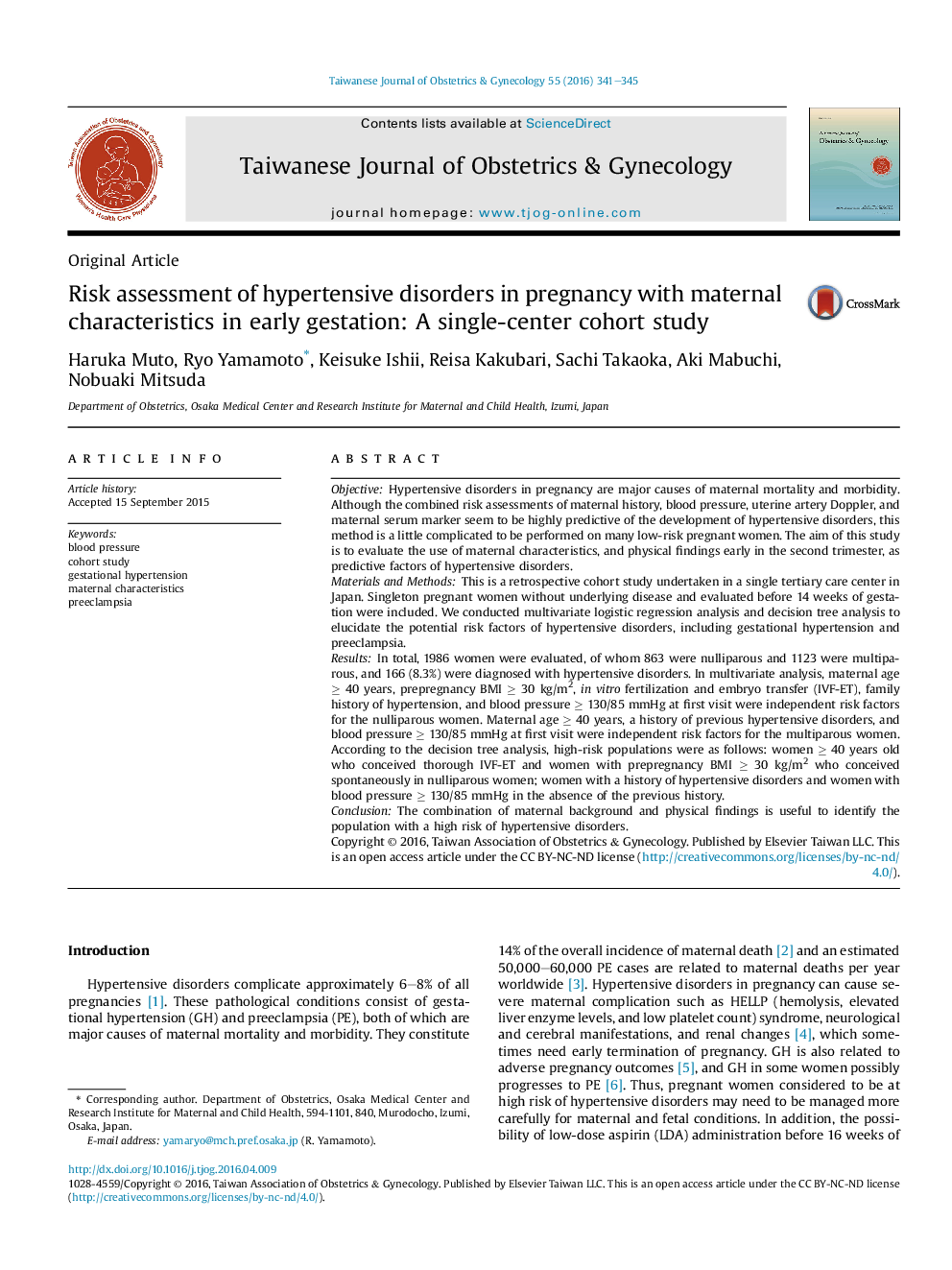| Article ID | Journal | Published Year | Pages | File Type |
|---|---|---|---|---|
| 3975157 | Taiwanese Journal of Obstetrics and Gynecology | 2016 | 5 Pages |
ObjectiveHypertensive disorders in pregnancy are major causes of maternal mortality and morbidity. Although the combined risk assessments of maternal history, blood pressure, uterine artery Doppler, and maternal serum marker seem to be highly predictive of the development of hypertensive disorders, this method is a little complicated to be performed on many low-risk pregnant women. The aim of this study is to evaluate the use of maternal characteristics, and physical findings early in the second trimester, as predictive factors of hypertensive disorders.Materials and MethodsThis is a retrospective cohort study undertaken in a single tertiary care center in Japan. Singleton pregnant women without underlying disease and evaluated before 14 weeks of gestation were included. We conducted multivariate logistic regression analysis and decision tree analysis to elucidate the potential risk factors of hypertensive disorders, including gestational hypertension and preeclampsia.ResultsIn total, 1986 women were evaluated, of whom 863 were nulliparous and 1123 were multiparous, and 166 (8.3%) were diagnosed with hypertensive disorders. In multivariate analysis, maternal age ≥ 40 years, prepregnancy BMI ≥ 30 kg/m2, in vitro fertilization and embryo transfer (IVF-ET), family history of hypertension, and blood pressure ≥ 130/85 mmHg at first visit were independent risk factors for the nulliparous women. Maternal age ≥ 40 years, a history of previous hypertensive disorders, and blood pressure ≥ 130/85 mmHg at first visit were independent risk factors for the multiparous women. According to the decision tree analysis, high-risk populations were as follows: women ≥ 40 years old who conceived thorough IVF-ET and women with prepregnancy BMI ≥ 30 kg/m2 who conceived spontaneously in nulliparous women; women with a history of hypertensive disorders and women with blood pressure ≥ 130/85 mmHg in the absence of the previous history.ConclusionThe combination of maternal background and physical findings is useful to identify the population with a high risk of hypertensive disorders.
